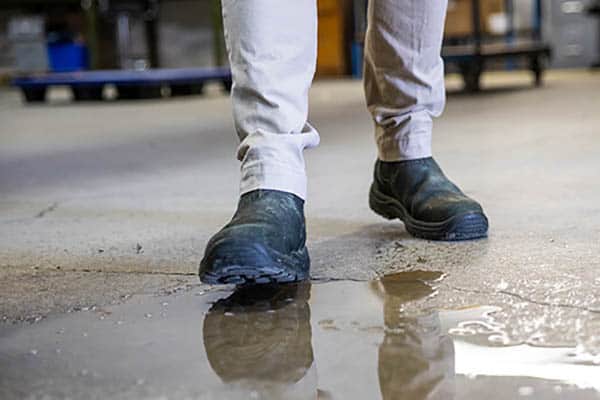A Premise Liability Case, also known as a “trip-and-fall” or “slip-and-fall” case, is a situation where a person’s injury is the result of hazardous conditions on someone else’s property. These types of conditions can include, for instance:
- Slippery floor surfaces
- Obstacles in a walkway
- Sidewalks that have been ruined by tree roots
- Poorly lit areas
- Poorly shoveled sidewalks after a snowstorm
- A run-down stairway and/or loose banister inside of a home
Basically, negligence and inadequate maintenance can lead to such a situation where visitors, customers, or even just passersby can be injured. When this occurs, the accident victim is entitled to compensation.
What is an Example of Premise Liability Case?
Can you picture a sidewalk that’s displaced by tree roots?
Rosenberg Law recently represented a plaintiff in a case involving a property owner whose sidewalk was raised considerably because a tree with an overgrown root system on their property had displaced it. While this phenomenon might seem common, this growth would have taken place over the course of a number of years, and the owner would have noticed the damage to the cement slab of sidewalk. In this particular case, the location of the property was a ski resort, and the area where this occurred was often traveled by thousands of people every day. Although the owner repaired the damaged sidewalk, they did it in a haphazard fashion. As a result, the repair was worse than the disjointed sidewalk.
The client was walking down the stairs where it was quite crowed. It was very crowded. Her foot got caught in a hole. She fell forward and completely tore her labarum, her shoulder. Worse yet, it was her dominant hand and resulted a lifetime of problems. So we litigated the case against the ski resort and were able to obtain a very good result for my client. In turn, the defect in the property was repaired properly. So as a result of this case and its conclusion, people can walk in this area more safely.
What To Do If You’re Involved in a Trip-and-Fall Case?
If you’re involved in the trip-and-fall or slip-and-fall case, it’s important that you take the right action immediately. These steps involve:
- Getting medical attention as soon as possible
- Document the cause of the fall by taking a photo of the accident’s site
- Document the defect that caused your fall in relation to its surroundings
- Take a photo of the property so as to determine ownership
- Call your attorney for further guidance on what to do
More than likely, there are additional steps that need to be taken, but the photographs of the poorly maintained area that resulted in the accident are vital along with a physician’s documentation of your injuries should you choose to litigate the case. Furthermore your attorney might require more information in the form of a deposition.
What does Litigation Involve?
Litigating a case requires the following actions:
- filing a complaint against the owner(s) of the property
- Drafting a very detailed list or a statement about the incident
- Detailing the negligence and the resulting injuries
- formally filing a lawsuit
When you file a lawsuit, you’ve just started a process that involves different phases. Both plaintiff and defendant(s) exchange information through the form of written questions called interrogatories. This exchange is called a request for the production of documents. So both sides request a list of documents from each other. After that generally, depositions are completed.
What is a deposition?
A deposition is a question-and-answer session with a stenographer who takes down all information word for word. Before you answer the questions, you placed under oath. Depositions are considered to be powerful tools that make a difference as the case develops and you go to trial.
Ultimately, who is responsible for the damages?
Exactly who is held accountable and how depends on who owns the property. In the situation of a residential property, a residential owner or even an owner who is not occupying the house but is renting it to another party, is still responsible for maintaining and making sure that residence is safe. In other words, it’s their responsibility to maintain that sidewalk, to shovel that sidewalk in the winter time, to make sure there are no uneven areas that could cause tripping hazards, and to make sure the property is properly lit. This protects anyone who is walking by the premises and any visitors.
On the other hand, if a municipality owns the property, then a more complex issue comes into play because in Pennsylvania and New Jersey, you can only sue municipalities under certain circumstances. This scenario proves to be very difficult for the person who is injured due to sovereign immunity.
What Is Sovereign Immunity?
This legal concept comes from the English law. All in all, the municipality dictates the circumstances in which you can bring a case. For instance, in Philadelphia, you have to have suffered a permanent injury, and you have to have a certain amount of medical bills incurred as a result of it. It has to fall into one of the exceptions that are specifically laid out as to whether you can bring a case or not.
So in the event that you suffer an injury as a result of negligence on the part of a residential or commercial property owner, you should document the incident and seek medical help. Then contact Rosenberg Law to see how we can help.

Recent Comments